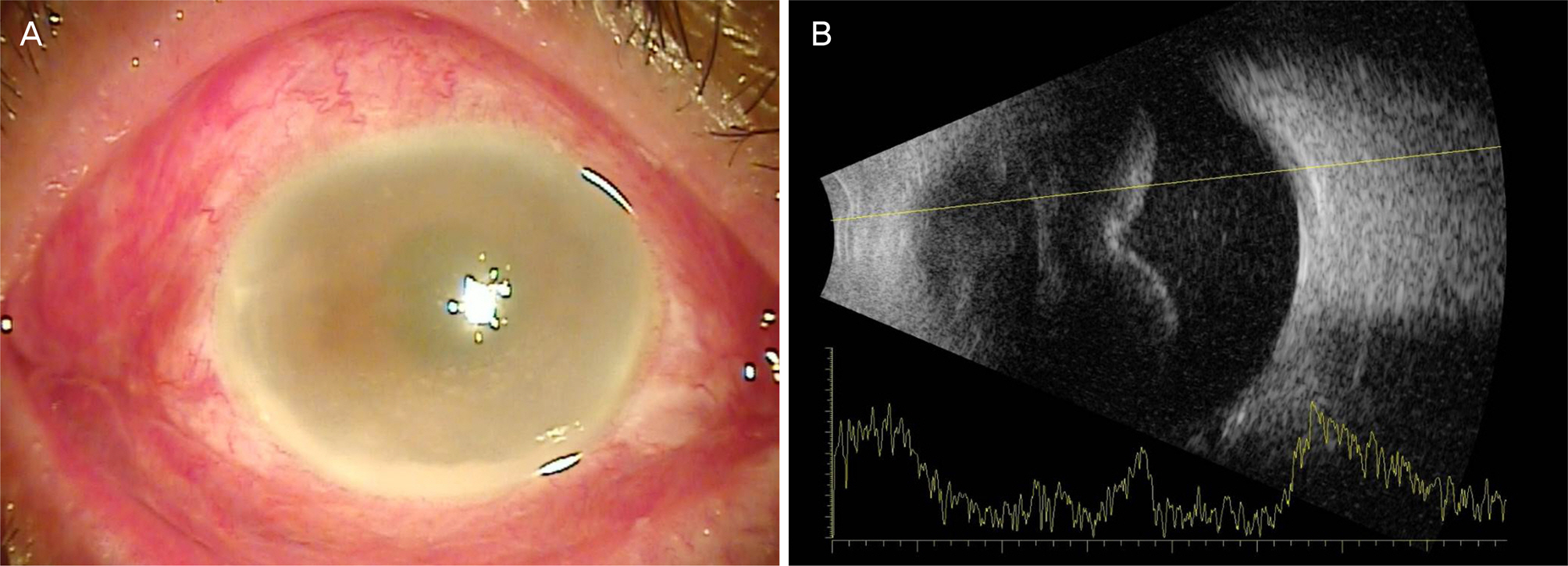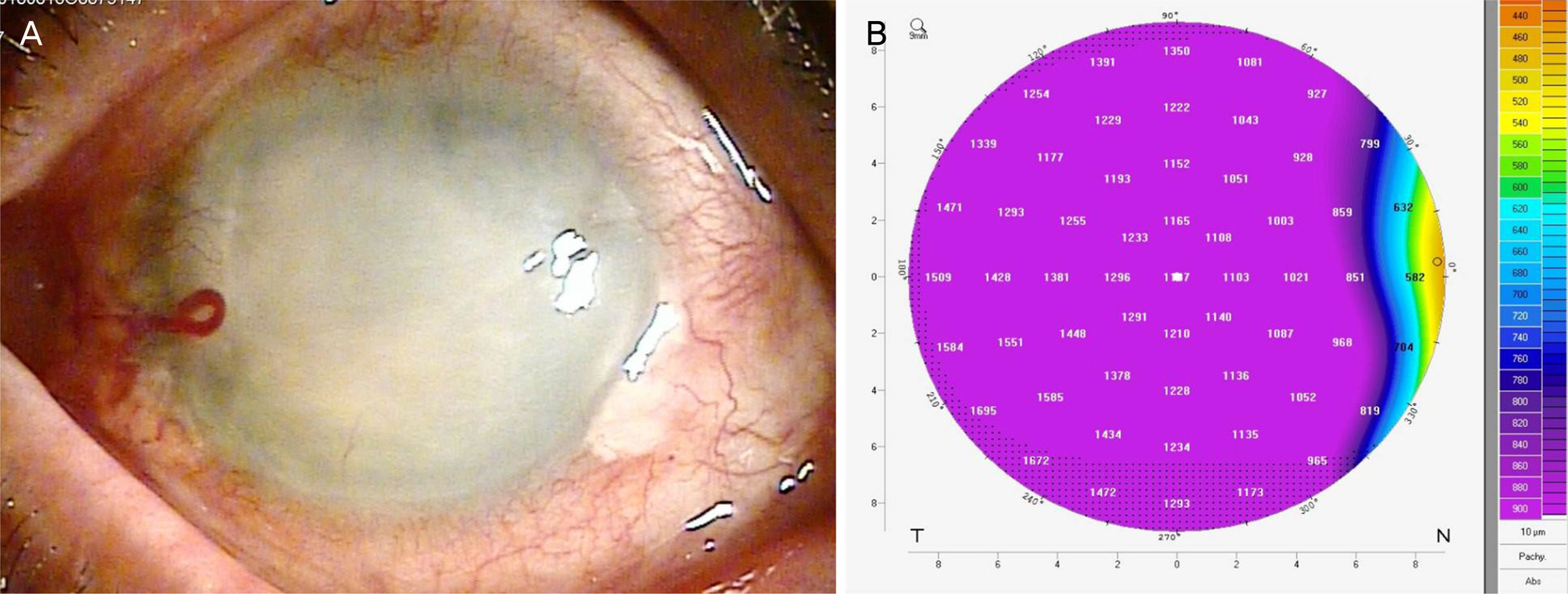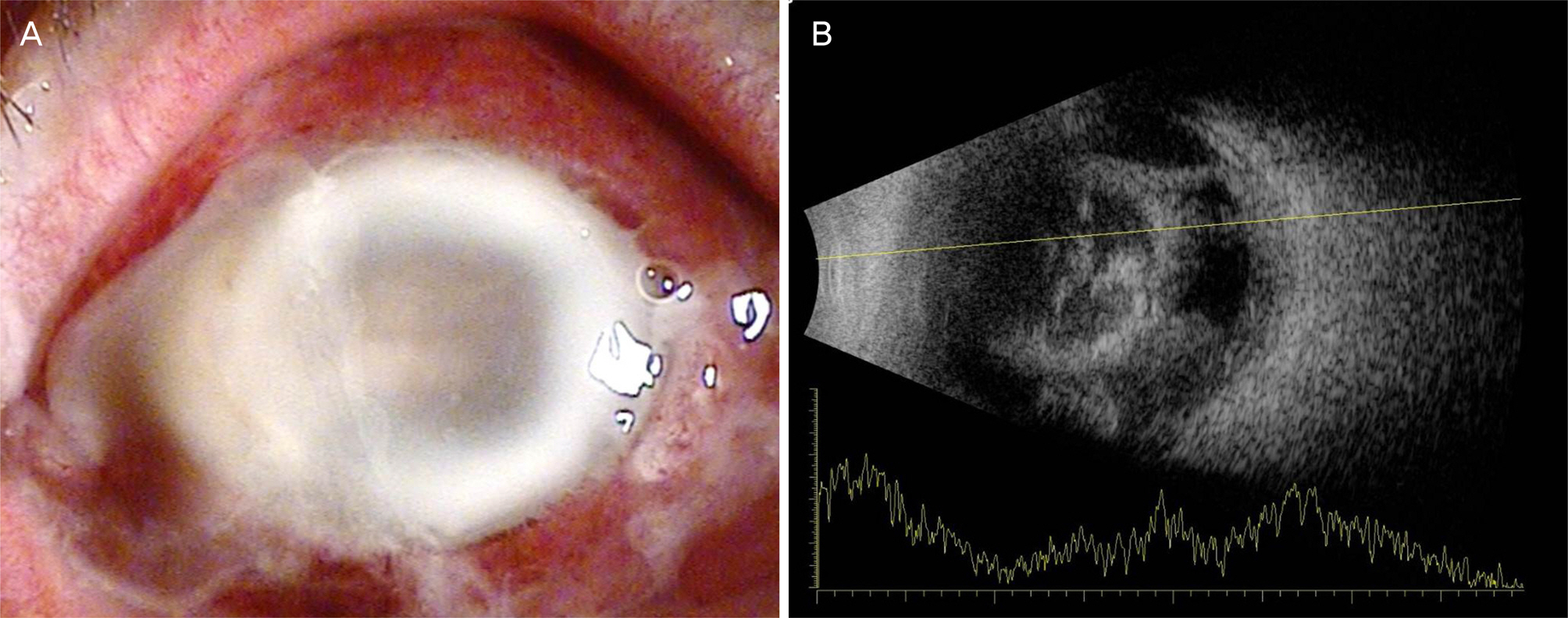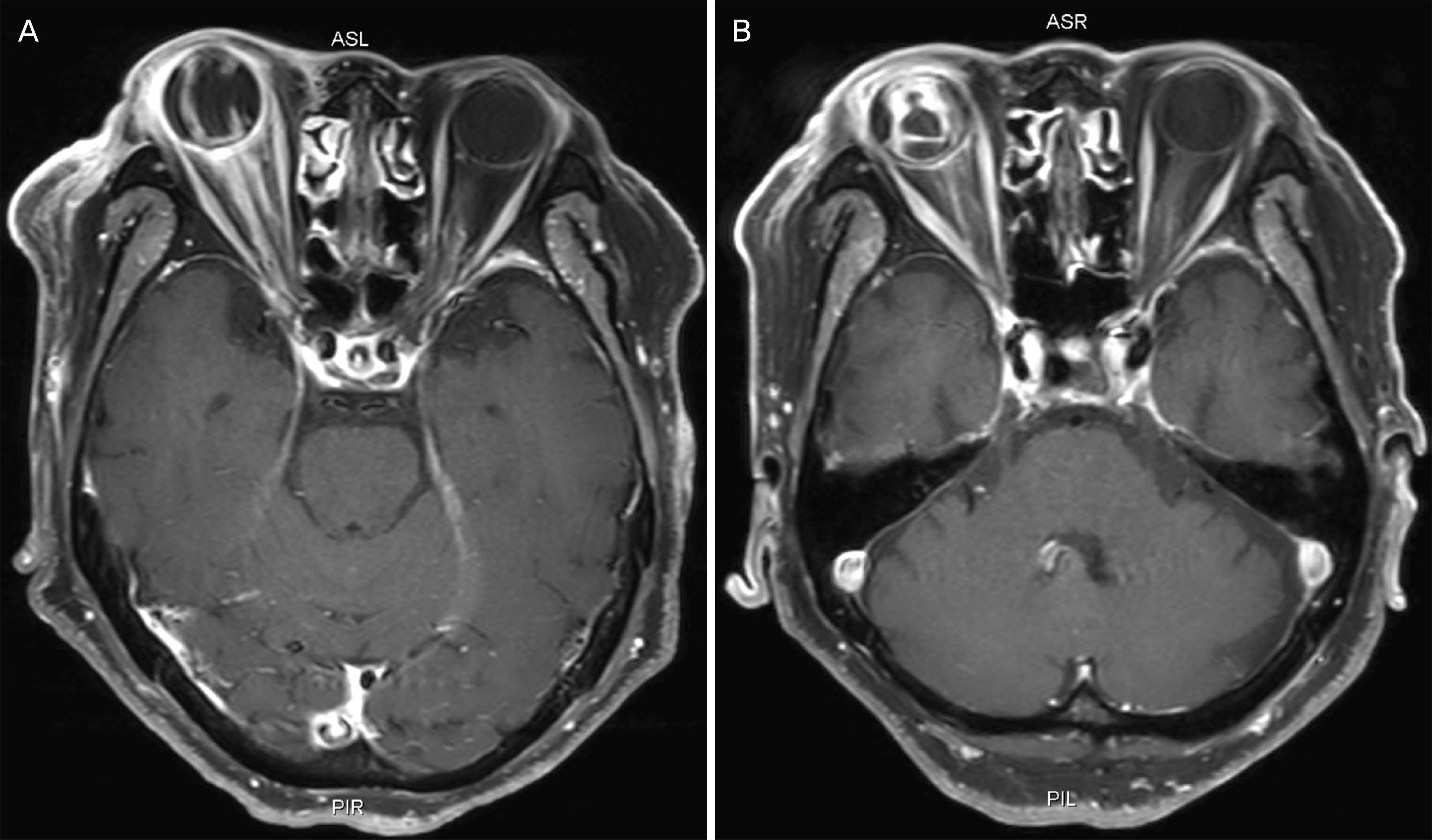J Korean Ophthalmol Soc.
2019 Mar;60(3):280-286. 10.3341/jkos.2019.60.3.280.
Two Cases of Unusual Presentation of Postoperative Endophthalmitis Caused by Streptococcus dysgalactiae Subspecies Equisimilis
- Affiliations
-
- 1Department of Ophthalmology, College of Medicine, Gyeongsang National University, Jinju, Korea. inyoung@gnu.ac.kr
- 2Health Science Institute, Gyeongsang National University, Jinju, Korea.
- KMID: 2440457
- DOI: http://doi.org/10.3341/jkos.2019.60.3.280
Abstract
- PURPOSE
To report two cases of postoperative endophthalmitis caused by Streptococcus dysgalactiae subspecies equisimilis (SDSE), which appeared as hyperacute presentation and panophthalmitis.
CASE SUMMARY
A 68-year-old male was treated with cataract surgery and was evaluated the next day (less than 24 hours after surgery) because of acute loss of vision. There was severe inflammation and the visual acuity was light perception. The patient underwent pars plana vitrectomy (PPV) with intravitreal antibiotic injection. The vitreous culture revealed SDSE. After PPV, regression of inflammation was observed, although the corneal edema had progressed. The cornea evolved to decompensate due to bullous keratopathy and visual acuity of the eye decreased to no light perception after 3 months. A 87-year-old male who underwent phacoemulsification and intraocular lens implantation 2 days previously was hospitalized due to severe ocular pain and visual loss. There was severe inflammation, and the visual acuity was no light perception. The patient received only intravitreal injections of antibiotics due to severe corneal necrosis. The aqueous humor revealed SDSE. Four days after intravitreal injection, erythema and swelling of the eyelid of the affected eye was observed, and diagnosed as panophthalmitis. After treatment with intravenous antibiotics, cellulitis of the eyelid was resolved. The eye progressed as phthisis after 3 months without recurrence.
CONCLUSIONS
Postoperative SDSE endophthalmitis showed aggressive and hyperacute presentation, resulting in blindness despite prompt treatment. SDSE is an emerging organism and should be considered a potential cause of postoperative endophthalmitis.
Keyword
MeSH Terms
-
Aged
Aged, 80 and over
Anti-Bacterial Agents
Aqueous Humor
Blindness
Cataract
Cellulitis
Cornea
Corneal Edema
Endophthalmitis*
Erythema
Eye Infections
Eyelids
Humans
Inflammation
Intravitreal Injections
Lens Implantation, Intraocular
Male
Necrosis
Panophthalmitis
Phacoemulsification
Recurrence
Streptococcus*
Visual Acuity
Vitrectomy
Anti-Bacterial Agents
Figure
Reference
-
References
1. Takahashi T, Ubukata K, Watanabe H. Invasive infection caused by Streptococcus dysgalactiae subsp. Equisimilis: characteristics of strains and clinical features. J Infect Chemother. 2011; 17:1–10.
Article2. Watanabe S, Takemoto N, Ogura K, Miyoshi-Akiyama T. Severe invasive streptococcal infection by Streptococcus pyogenes and Streptococcus dysgalactiae subsp. equisimilis. Microbiol Immunol. 2016; 60:1–9.
Article3. Oppegaard O, Mylvaganam H, Skrede S, et al. Emergence of a Streptococcus dysgalactiae subspecies equisimilis stG62647-line-age associated with severe clinical manifestations. Sci Rep. 2017; 7:7589.
Article4. Wajima T, Morozumi M, Hanada S, et al. Molecular characterization of invasive Streptococcus dysgalactiae subsp. equisimilis. Japan Emerg Infect Dis. 2016; 22:247–54.5. Ritterband DC, Shah MK, Buxton DJ, et al. A devastating ocular pathogen: beta-streptococcus Group G. Cornea. 2000; 19:297–300.6. Goh ES, Liew GC. Traumatic bleb-associated Group-G beta-hae-molytic Streptococcus endophthalmitis. Clin Exp Ophthalmol. 2008; 36:580–1.7. Kaliamurthy J, Cuteri V, Jesudasen N, et al. Postoperative ocular infection due to Streptococcus dysgalactiae subspecies equisimilis. J Infect Dev Ctries. 2011; 5:742–4.
Article8. Hagiya H, Semba T, Morimoto T, et al. Panophthalmitis caused by Streptococcus dysgalactiae subsp. equisimilis: a case report and abdominal review. J Infect Chemother. 2018; 24:936–40.9. Margo CE, Cole EL 3rd. Postoperative endophthalmitis and asymptomatic bacteriuria caused by group G Streptococcus. Am J Ophthalmol. 1989; 107:430–1.
Article10. Posenauer B, Funk J. Group G streptococci as pathogens of abdominal endophthalmitis Klin Monbl Augenheilkd. 1991; 199:45–7.11. Kugu S, Sevim MS, Kaymak NZ, et al. Exogenous group G Streptococcus endophthalmitis following intravitreal ranibizumab injection. Clin Ophthalmol. 2012; 6:1399–402.12. Park JM, Yeom MI, Park JM. A case of Streptococcus dysgalactiae endophthalmitis after cataract surgery. J Korean Ophthalmol Soc. 2018; 59:185–9.
Article13. Baxter KR, Robinson JE, Ruby AJ. Occlusive vasculitis due to hyperacute Streptococcus mitis endophthalmitis after intravitreal ranibizumab. Retin Cases Brief Rep. 2015; 9:201–4.
Article14. Gan IM, van Dissel JT, Beekhuis WH, et al. Intravitreal vancomycin and gentamicin concentrations in patients with postoperativeendophthalmitis. Br J Ophthalmol. 2001; 85:1289–93.15. Results of the Endophthalmitis Vitrectomy Study. A randomized trial of immediate vitrectomy and of intravenous antibiotics for the treatment of postoperative bacterial endophthalmitis. Endophthalmitis Vitrectomy Study Group. Arch Ophthalmol. 1995; 113:1479–96.
- Full Text Links
- Actions
-
Cited
- CITED
-
- Close
- Share
- Similar articles
-
- A Case of Neonatal Meningitis Caused by Streptococcus dysgalactiae subspecies dysgalactiae and Herpes Simplex Virus
- Pathologic and molecular characterization of Streptococcus dysgalactiae subsp. equisimilis infection in neonatal piglets
- Streptococcus Dysgalactiae Subspecies Dysgalactiae Infection after Total Knee Arthroplasty: A Case Report
- A Case of Streptococcus dysgalactiae Endophthalmitis after Cataract Surgery
- Detection of Streptococcus dysgalactiae subsp. equisimilis in equine nasopharyngeal swabs by PCR





